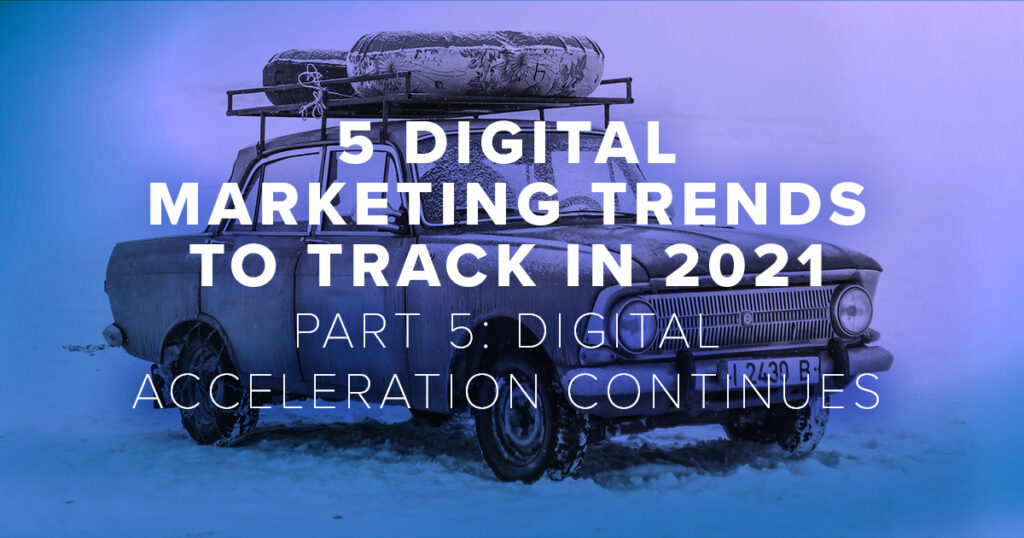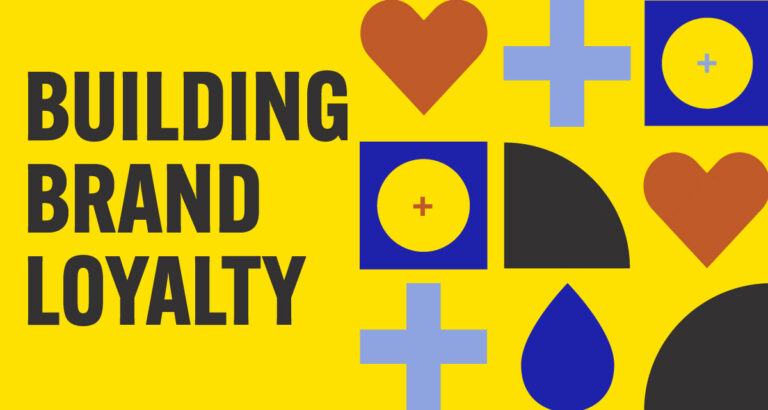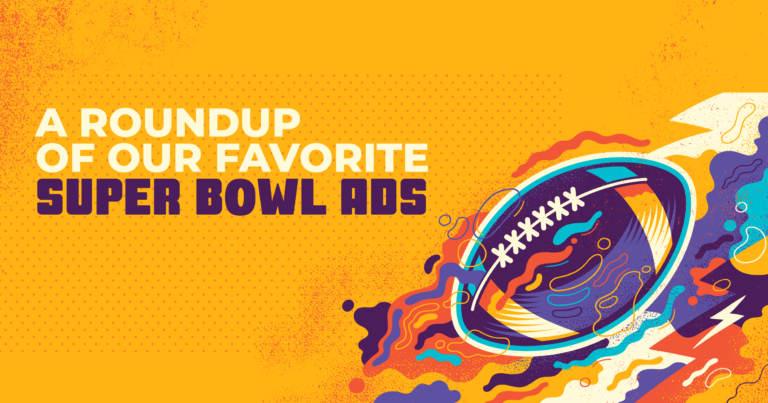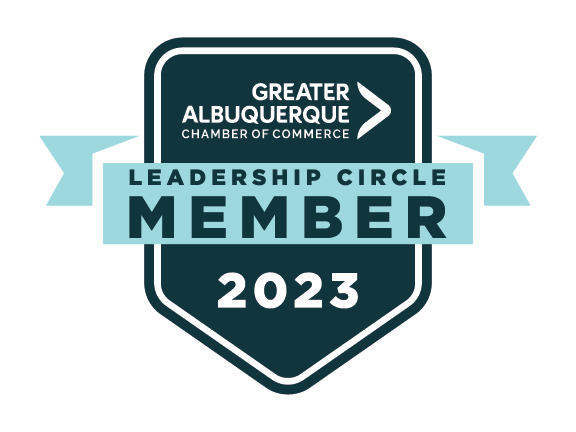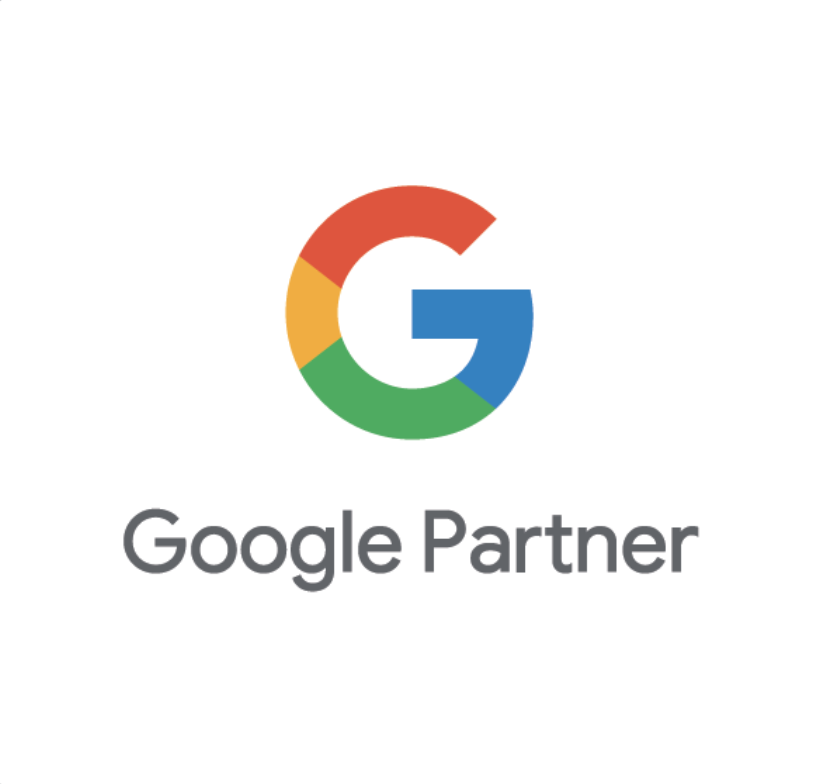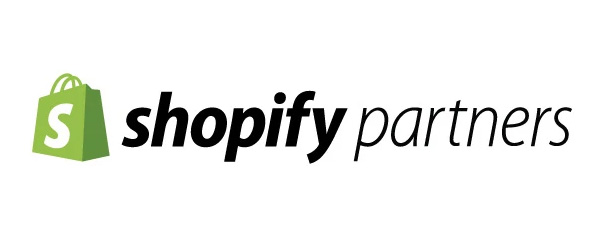“Digital adoption has taken a quantum leap at both the organizational and industry levels.” – McKinsey
Welcome to the final installment in our series on 2021 marketing trends. This week we’re talking about how the Covid-19 pandemic has forced a digital acceleration over the last year and what that means for the future of marketing, ecommerce and branding.
Pandemic Marketing and the Great Digital Acceleration
At this time last year, as lockdowns and quarantines swept the nation, many brands and businesses faced a choice: Build a digital business or become obsolete. At the same time, consumers faced a similar choice: Become comfortable ordering everything from toilet paper to clothing online, or go without.
On both sides of the purchase, an inflection point took place—a rapid digital acceleration. Businesses pushed digital initiatives forward in months that might once have taken years, and consumers rapidly found that the internet could facilitate everything from grocery shopping to work meetings to live concerts.
A year later, that acceleration has solidified. According to a McKinsey Global Survey of executives that took place in mid-2020, companies have accelerated the digitization of customer and supply-chain interactions and of their internal operations by three to four years.
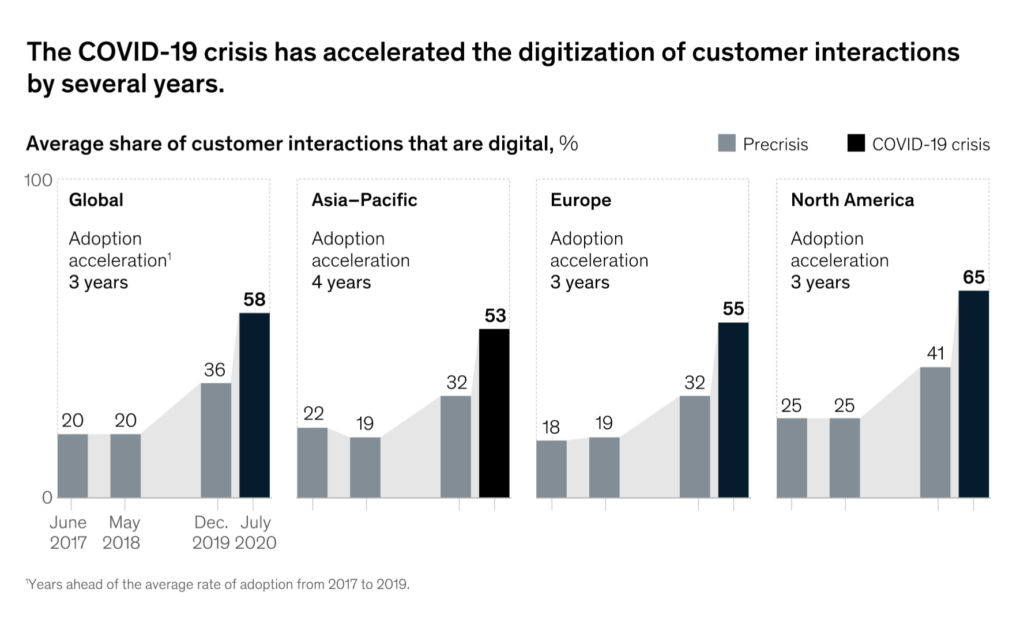
And the speedup in creating digital or digitally enhanced offerings was even greater. The same survey suggests that companies accelerated developing digital products and services by an average of seven years.
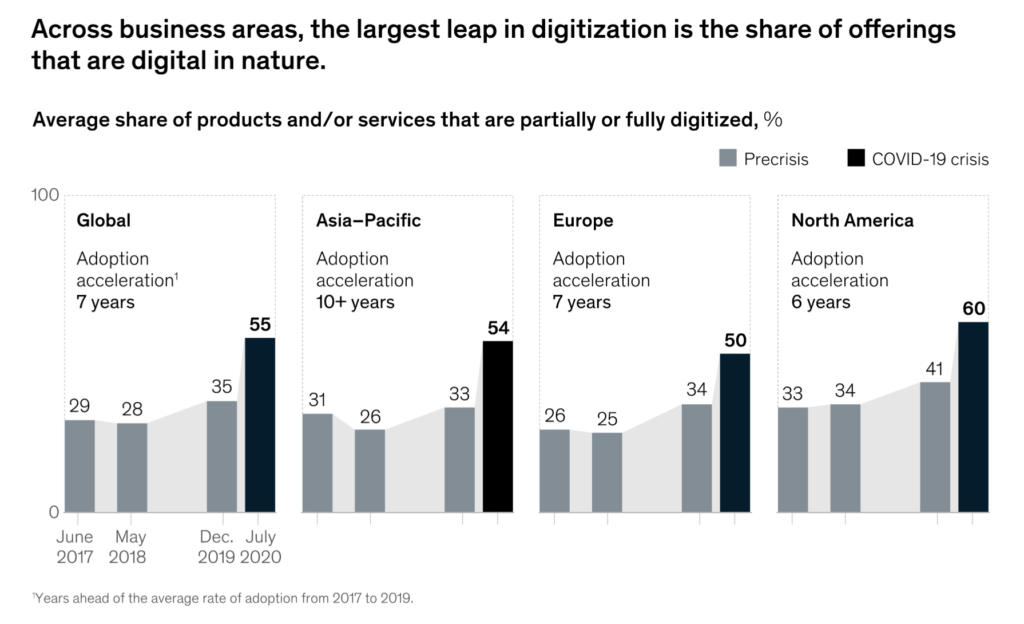
At the start of the pandemic, many thought the changes the pandemic forced on businesses and consumers would be short lived. Remember when we all looked forward to getting back to “normal?” The McKinsey survey suggests that the definition of normal has permanently changed. Survey respondents expected that the changes would stick long after the pandemic is quelled.
For example, 54 percent of respondents believe the remote working changes at their business would be permanent, with only 23 percent expecting to return to an in-office environment. And 53 percent think the increased consumer demand for online purchasing and services is here, to stay. Only 27 percent expect a return to business as usual.

What Does this Mean For Marketers and Business Leaders?
Surveys are great, but what does all this mean for business owners and marketers trying to reach customers in 2021? We have three ways to get started today.
1. Develop a Digital First Business Strategy
For too long, digital adoption has been an afterthought for many business leaders and marketers who came of age before the digital revolution. The pandemic swept away the last vestiges of this way of life. Today, successful business leaders and marketers must start with a digital-first approach. It shouldn’t be a part of your business strategy—it should be your business strategy.
The McKinsey study suggests that while executives used to see technology advances in terms of potential cost savings, today they see them as essential to their competitive advantage. Review your business strategies from top to bottom and bake in digital-first ways of interacting and offerings.

2. Redirect Resources
A truism in advertising is to go where your customers are. And in 2021, that’s online. Look at both your marketing mix and your internal IT capabilities. Consider shifting resources based on building out your digital presence and offerings. Investing in customer-facing technologies now can have payoffs for years to come as the digital acceleration continues to solidify.
A 2021 Gartner study of CIO’s revealed that top-performing companies have gone all-in on investing in digital, with 93% of top-performing CIO’s expecting increased use of digital channels to reach customers in 2021.
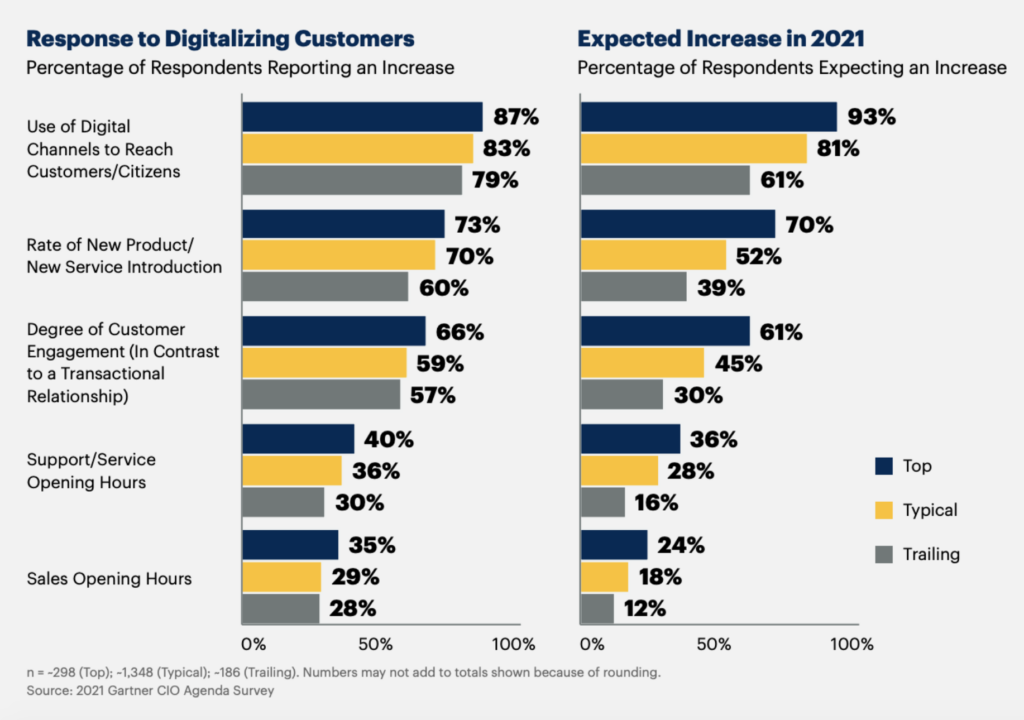
3. Redirect Resources
As we all know, Covid-19 has changed the way we do pretty much everything. No matter what industry you are in, it has changed the way your customers interact with you.
Review your customer journey with an eye toward integrating new digital touchpoints with offline touchpoints like in-store visits or phone calls. Tying together the entire customer journey, on and offline, can help you reach your customers in a more meaningful way. This involves considering each stage in the customer journey and the touchpoints involved. Promotional offerings, integrated messaging campaigns and automated campaigns that leverage your data to tie disparate channels together can all help your business.
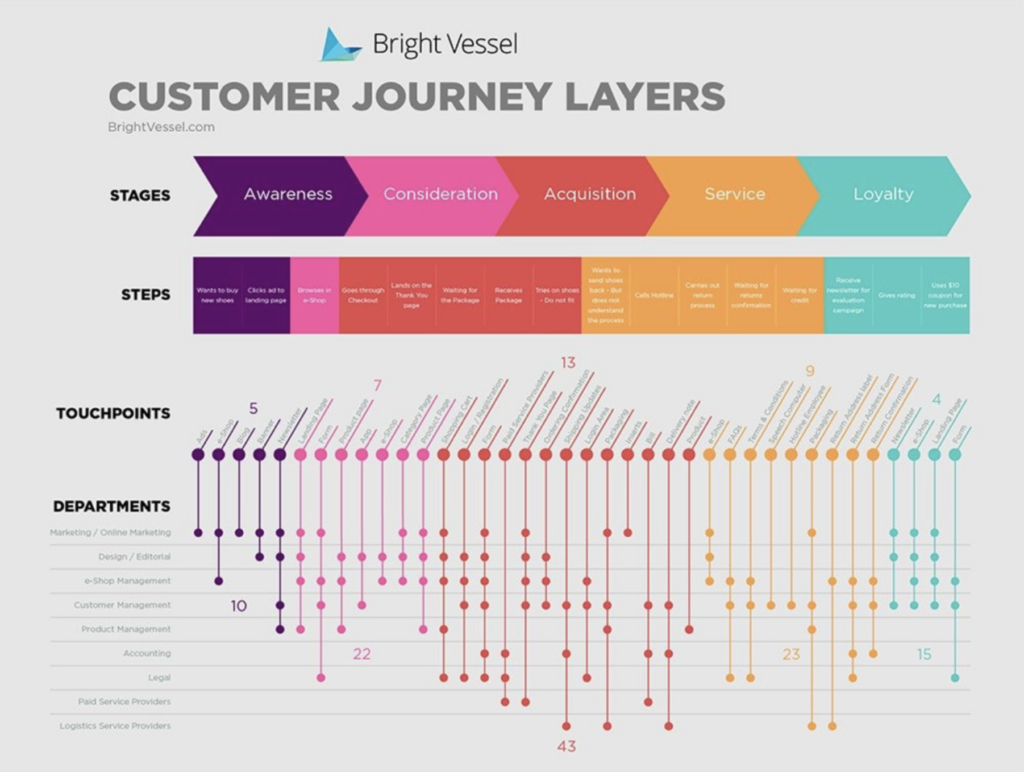
Example customer journey map by Bright Vessel.

